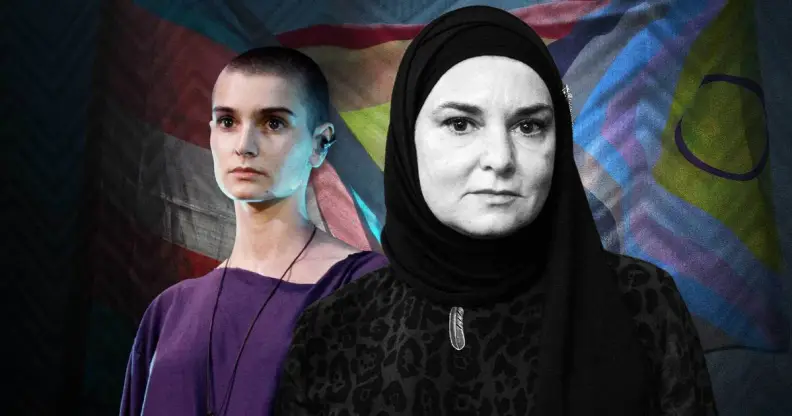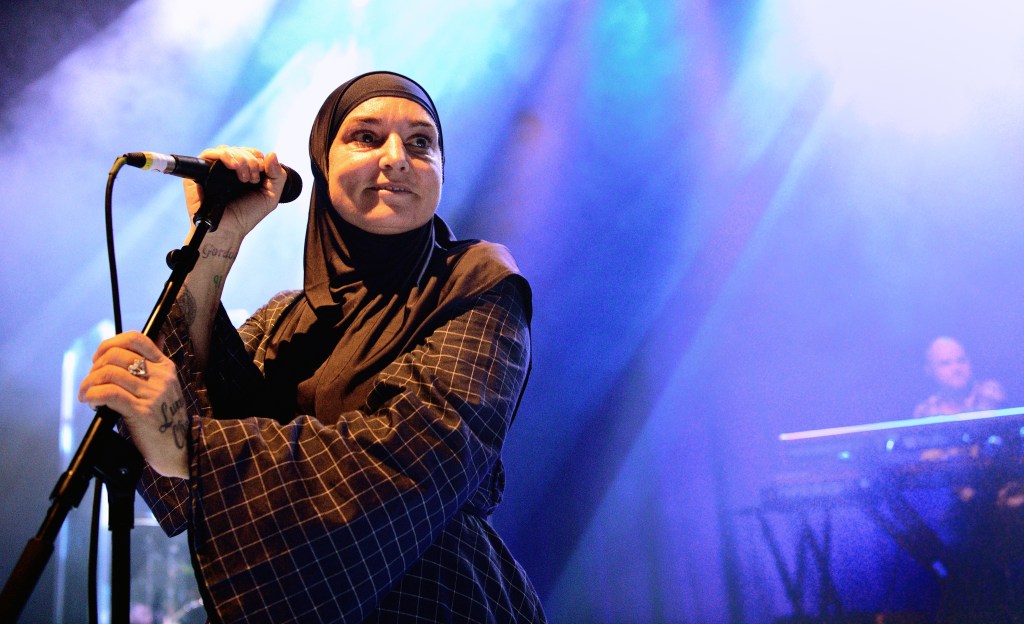All the ways queer icon Sinéad O’Connor proved she was a fearless LGBTQ+ ally

Sinéad O’Connor was a lifelong LGBTQ+ ally. (Getty)
As tributes pour in for Irish singer and outspoken political activist Sinéad O’Connor, who died yesterday (26 July), aged 56, many are remembering her long-standing LGBTQ+ allyship.
Following O’Connor’s family announcing her death, fellow musicians, politicians and public figures were quick to commemorate her legacy within the music industry and on the political stage.
The Irish artist, best known for her 1990 Prince cover “Nothing Compares 2 U” and Grammy-Award-winning album I Do Not Want What I Haven’t Got, was a life-long social activist.
Just five years into her acclaimed 10-studio-album career, O’Connor sparked global outrage while performing Bob Marley’s “War” on Saturday Night Live in 1992 when she ripped up a photo of Pope John Paul II in protest at the Catholic Church’s role in covering up child sexual abuse by clerics.
The singer, who suffered from mental-health issues, advocated for women’s rights, victims of child sexual abuse, the anti-racism movement and LGBTQ+ rights. In her 2021 memoir Rememberings she said she had no regrets as she was a “protest singer” who “did not desire fame”.
In 2018, O’Connor converted to Islam, changing her name to Shuhada’ Sadaqat in her personal life, although she remained known as Sinead O’Connor professionally.
Was Sinead O’Connor a lesbian?
O’Connor’s relationship with her sexuality fluctuated over the years. In an interview with Curve magazine in 2000, she said she was a “dyke” but a year later admitted it was “overcompensating of me to declare myself a lesbian.”
Then, in a 2005 Entertainment Weekly interview, she described herself as “three-quarters heterosexual, a quarter gay”. The topic was broached again in 2014 when she declared that she didn’t “believe in labels of any kind”, during an interview with Pride Source.
“I think if you fall in love with someone, you fall in love with someone and I don’t think it would matter what they were,” she said.

“They could be green, white and orange, they could be whatever the opposite of gay or straight is. If I fall in love with someone, I wouldn’t give a sh*t if they were a man or a woman.”
During the interview she revealed that she’d never forget walking into the Hippodrome nightclub after moving to London in her late teens. It was the first time she truly connected with the queer community.
“I actually find the whole gay community an enormous inspiration, because I’ve never taken the kind of s**t gay people take,” she said.
How did Sinead O’Connor support the LGBTQ+ community?
O’Connor’s public activism extended to the LGBTQ+ community. A month after conservative prime minister Margaret Thatcher rolled out the anti-gay legislation section 28 in 1988, the singer attended Pride in solidarity with the community. She performed alongside mainstream pop duo Erasure, featuring frontman Andy Bell who came out as gay in the late ’80s.
In 1990, during the Aids crisis, O’Connor contributed to the fundraising album Red Hot + Blue with a cover of “You Do Something to Me” by gay composer Cole Porter. Other artists on the album included U2, Neneh Cherry, Salif Keita and Fine Young Cannibals.
It went on to sell more than a million copies worldwide, gain a television special and marked the music industry’s first major showcase of solidarity.
O’Connor’s support for the LGBTQ+ community persisted throughout her life. According to a former employee of Transgender Equality Network Ireland (TENI), O’Connor donated her clothes to trans youth.
“Every Irish queer, woman and outcast is surely feeling Sinéad’s passing tonight. In 2017, when I worked for TENI, we got a call from her management asking could she donate her closet to us to as she was downsizing and wanted the clothes to go to trans folk in need,” Toryn Caitriona Glavin wrote on Twitter following the singer’s death.
This other other LGBTQ+ fans to share their experiences.
“I saw her in Hammersmith in 2019. The audience where I was standing was largely made up of older queer women, many probably left Ireland in the ’80s because of prejudice, you could tell how much Sinead meant to them,” one person wrote.
And while appearing on Good Morning Britain in 2019, O’Connor showed her continued allyship by wearing a rainbow top alongside her hijab.
How did this story make you feel?

